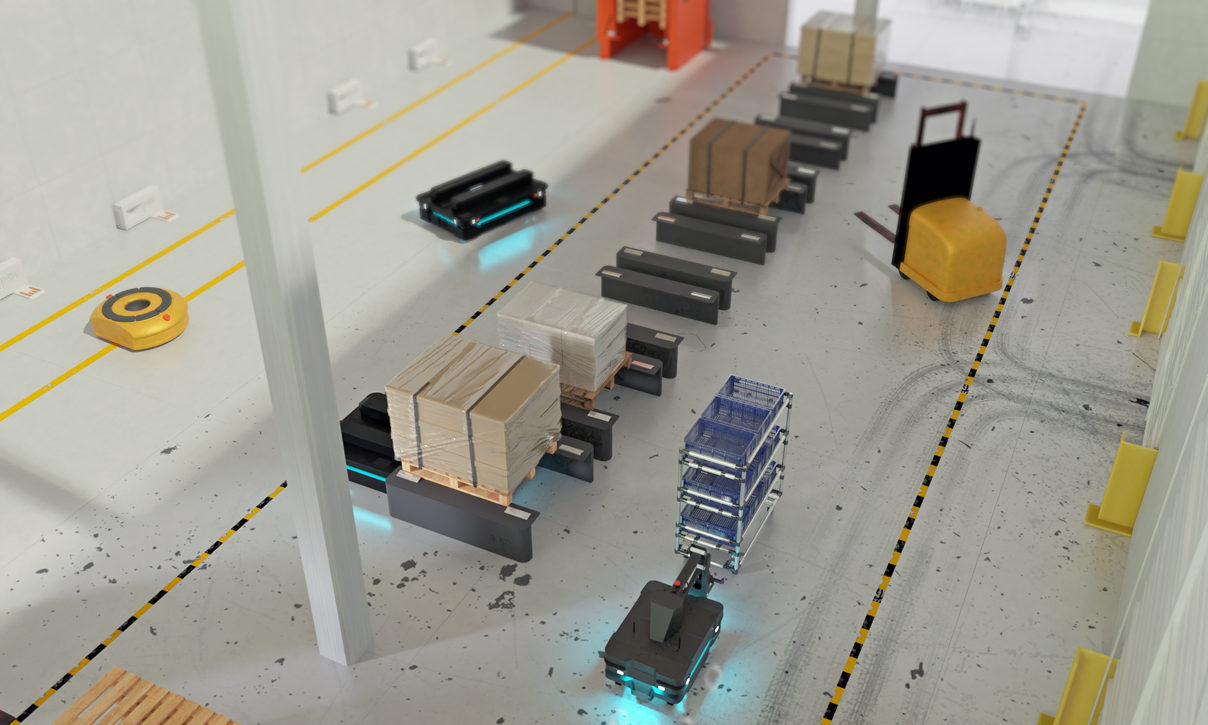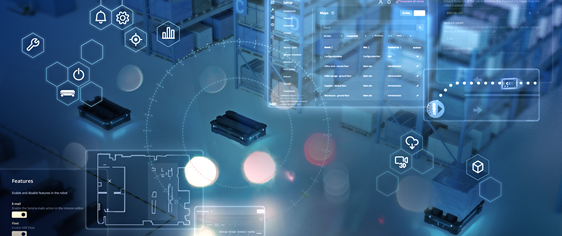3. What is VDA 5050 and MassRobotics?
The VDA 5050 is a standard on how to communicate between different AGVs, potentially from different vendors, and one control system. The standard describes interfaces and protocols between control layer and AGVs. AMRs can fit into that if they give away some of their autonomy.
The target of this standard is to enable compliant AGVs and mobile robots to work together using one common fleet management software. It describes the communication between two entities; the AGV and the fleet manager, and therefore VDA 5050 will need to be implemented at both ends of the communications channel to function correctly. The intention with VDA 5050 is to control the process on a low level, in contrast to have different vendors doing fleet solutions that could coexist and negotiate on the shop floor.
The VDA 5050 is the European standard for AGV and AMR interoperability. It has been initiated by a collaboration between the German Association of the Automotive Industry (VDA) and the VDMA Material handling and Intralogistics Association. Even though it has been initiated by German associations, it will be used widely across Europe, and possibly across other regions too.
MassRobotics is the American concept for interoperability standards. It is the group’s mission to develop standards to deploy AMRs and other automation equipment from different vendors and have them work together in the same environment. This standard will allow robots of different types to share status information and operational conventions so they can coexist efficiently.
Both VDA 5050 and MassRobotics are at an early stage and the current versions are limited to basic functionalities, like communication of commands to AMR/AGVs and sending actions. They do not yet cover the many other factors that must be managed to ensure a successful multi-robot installation.



